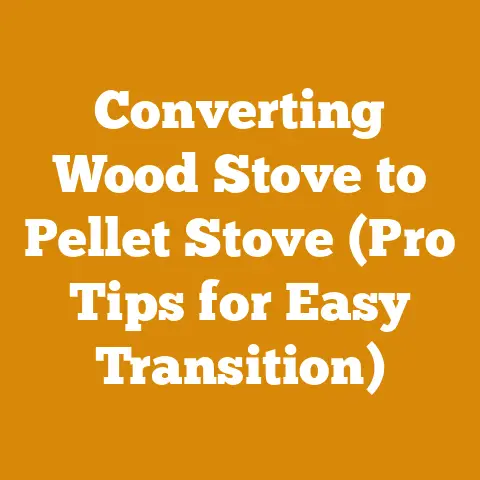Timber Frame Stud Wall Guide (7 Pro Tips for Cabin Durability)
Ever wondered what truly separates a cabin that stands the test of time from one that crumbles under pressure? It’s more than just aesthetics; it’s about the robust foundation you build, literally, with a timber frame stud wall. I’ve spent years felling trees, milling lumber, and building structures that endure, and I’m here to share my hard-earned wisdom. This guide will walk you through seven pro tips, gleaned from countless hours in the woods and on construction sites, to ensure your cabin’s timber frame stud walls are not just strong, but built to last for generations.
Timber Frame Stud Wall Guide: 7 Pro Tips for Cabin Durability
Building a cabin is a significant undertaking, and the longevity of your structure hinges on the quality of your timber frame stud walls. These walls are the backbone of your cabin, providing structural support and resisting the elements. Let’s delve into the specifics, drawing from my own experiences and observations in the field.
1. Select the Right Timber: The Foundation of Durability
Choosing the right timber is paramount. Don’t just grab the cheapest lumber you can find. I’ve seen too many projects fail because of inadequate wood selection.
Wood Species Matter:
- For Durability: Opt for naturally rot-resistant species like cedar, redwood, or cypress, especially for timbers in direct contact with the ground or exposed to moisture. These woods contain natural oils and compounds that deter decay and insect infestation.
- For Strength: Douglas Fir and Oak are excellent choices for studs and framing members requiring high load-bearing capacity. Their dense grain structure provides exceptional strength and stability.
- Consider Local Availability: Sourcing timber locally reduces transportation costs and supports your regional economy. Plus, local wood is often better adapted to your specific climate.
Timber Grading:
- Understand timber grading standards in your region (e.g., National Lumber Grades Authority (NLGA) in North America, European Standard EN 14081 in Europe).
- Look for “Select Structural” or “No. 1” grades for studs. These grades ensure minimal knots and defects, guaranteeing superior strength and stability.
- Avoid lower grades (“No. 2” or “No. 3”) for structural components as they may contain excessive knots, wane, or other imperfections that compromise their integrity.
My Experience: I once built a small cabin using locally sourced Eastern White Pine for the studs, thinking I was saving money. Within a few years, I noticed signs of rot near the base of the walls. I learned a valuable lesson: investing in durable, properly graded timber from the start is far cheaper than replacing rotted studs later.
Actionable Metric: Aim for a minimum timber grade of “Select Structural” or “No. 1” for all studs and framing members.
Takeaway: Selecting the right timber, considering both species and grade, is the first critical step in ensuring your cabin’s longevity.
2. Master the Art of Timber Joinery: Strength in Connection
Timber joinery is the heart of a timber frame. Poor joinery weakens the entire structure, no matter how strong the individual timbers are.
Traditional Joinery Techniques:
- Mortise and Tenon: This classic joint involves a projecting tenon (tongue) that fits snugly into a mortise (hole). It’s incredibly strong, especially when combined with pegs or wedges.
- Dovetail Joints: These interlocking joints are ideal for resisting tension and shear forces. They are often used for connecting wall plates and beams.
- Lap Joints: Simple and effective, lap joints involve overlapping two timbers and fastening them together. They are suitable for non-critical connections.
Modern Joinery Methods:
- Metal Connectors: Engineered metal connectors, such as Simpson Strong-Tie, offer a convenient and reliable alternative to traditional joinery. They provide precise alignment and consistent strength.
- Screws and Bolts: While not as aesthetically pleasing as traditional joinery, screws and bolts can be used to reinforce joints or create simpler connections. Use exterior-grade fasteners to prevent corrosion.
Precision is Key:
- Accurate measurements and precise cuts are essential for tight-fitting joints. Use high-quality measuring tools and saws.
- Dry-fit all joints before final assembly to ensure proper alignment and fit. Make adjustments as needed.
- Use sharp chisels and planes to refine joint surfaces for a smooth, seamless connection.
My Insight: I’ve seen cabins where the mortise and tenon joints were sloppy and loose. The result? The walls swayed in the wind. A tight, well-executed joint is crucial for transferring loads and maintaining structural integrity.
Actionable Metric: Aim for a joint tolerance of no more than 1/16 inch (1.5 mm) for all timber connections.
Takeaway: Master the art of timber joinery. Whether you choose traditional or modern methods, precision and attention to detail are crucial for creating strong, durable connections.
3. Ensure Proper Wood Drying: Preventing Warping and Cracking
Green lumber is a recipe for disaster. As it dries, it shrinks, warps, and cracks, compromising the integrity of your timber frame.
Kiln Drying vs. Air Drying:
- Kiln Drying: This process involves placing lumber in a controlled environment with regulated temperature and humidity. It’s faster than air drying and results in a more stable product.
- Air Drying: This traditional method involves stacking lumber in a well-ventilated area and allowing it to dry naturally. It’s slower than kiln drying but less expensive.
Moisture Content Targets:
- For interior timber framing, aim for a moisture content of 12-15%.
- For exterior timber framing, aim for a moisture content of 15-18%.
- Use a moisture meter to accurately measure the moisture content of your timbers.
Drying Strategies:
- Stack Lumber Properly: When air drying, stack lumber with stickers (thin strips of wood) between each layer to promote air circulation.
- Protect from the Elements: Cover the lumber pile with a tarp to prevent rain and snow from wetting the wood.
- Monitor Moisture Content Regularly: Check the moisture content of the lumber periodically and adjust drying conditions as needed.
My Recommendation: I prefer kiln-dried lumber for critical structural components. While it’s more expensive, the added stability and reduced risk of warping are well worth the investment.
Actionable Metric: Use a moisture meter to ensure your timber reaches the target moisture content before construction.
Takeaway: Properly drying your timber is essential for preventing warping, cracking, and other problems that can compromise the structural integrity of your cabin.
4. Implement Effective Water Management: Defeating the Enemy
Water is the enemy of wood. Preventing water from penetrating your timber frame is crucial for long-term durability.
Roof Overhangs:
- Extend roof overhangs beyond the walls to protect them from rain and snow. A minimum overhang of 2 feet (60 cm) is recommended.
- Install gutters and downspouts to direct rainwater away from the foundation.
Foundation Drainage:
- Ensure proper drainage around the foundation to prevent water from pooling near the base of the walls.
- Install a French drain or other drainage system if necessary.
Vapor Barriers:
- Install a vapor barrier on the warm side of the wall to prevent moisture from condensing within the wall cavity.
- Choose a vapor barrier with a suitable permeability rating for your climate.
Sealants and Caulking:
- Use high-quality sealants and caulking to seal gaps and cracks around windows, doors, and other openings.
- Choose sealants and caulking that are specifically designed for exterior use and are compatible with wood.
My Observation: I’ve seen cabins where the lack of roof overhangs resulted in significant water damage to the walls. The constant exposure to rain and snow led to rot and decay.
Actionable Metric: Install roof overhangs that extend at least 2 feet (60 cm) beyond the walls.
5. Choose the Right Insulation: Balancing Energy Efficiency and Moisture Control
Insulation plays a crucial role in maintaining a comfortable and energy-efficient cabin. However, improper insulation can trap moisture and lead to rot.
Insulation Types:
- Rigid Foam Insulation: Offers excellent thermal performance and moisture resistance. It’s ideal for insulating exterior walls and roofs.
- Spray Foam Insulation: Provides an airtight seal and excellent insulation value. It’s suitable for filling irregular spaces and preventing air leaks.
- Fiberglass Insulation: A traditional and cost-effective option. However, it can absorb moisture and lose its insulating properties if it gets wet.
- Mineral Wool Insulation: Offers good thermal performance and is naturally fire-resistant. It’s also resistant to moisture and mold growth.
Vapor Permeability:
- Choose insulation with a suitable vapor permeability rating for your climate.
- In cold climates, use insulation with a low vapor permeability to prevent moisture from entering the wall cavity.
- In warm climates, use insulation with a high vapor permeability to allow moisture to escape.
Ventilation:
- Ensure proper ventilation within the wall cavity to allow moisture to escape.
- Install ventilation openings at the top and bottom of the wall to promote airflow.
My Preferred Method: I often use a combination of rigid foam insulation on the exterior and mineral wool insulation in the wall cavity. This provides excellent thermal performance, moisture resistance, and fire protection.
Actionable Metric: Calculate the R-value of your insulation based on your climate and energy efficiency goals.
Takeaway: Choose the right insulation type and ensure proper ventilation to balance energy efficiency and moisture control.
6. Protect Against Pests: Defending Against Wood-Boring Insects
Wood-boring insects can wreak havoc on your timber frame. Protecting your cabin from these pests is essential for long-term durability.
Wood Preservatives:
- Apply a wood preservative to all timbers before construction.
- Choose a preservative that is specifically designed for exterior use and is effective against wood-boring insects.
- Follow the manufacturer’s instructions carefully when applying the preservative.
Borate Treatment:
- Borate treatments are effective against a wide range of wood-boring insects.
- Apply borate solutions to the surface of the wood or inject them into existing infestations.
Regular Inspections:
- Inspect your timber frame regularly for signs of insect infestation.
- Look for small holes, sawdust, or other evidence of insect activity.
Preventative Measures:
- Remove any vegetation or debris that is in contact with the timber frame.
- Keep the area around the cabin clean and free of wood scraps.
My Advice: I always treat my timbers with borate before construction. It’s a relatively inexpensive and effective way to protect against wood-boring insects.
Actionable Metric: Inspect your timber frame at least twice a year for signs of insect infestation.
7. Plan for Regular Maintenance: Ensuring Long-Term Health
Even the best-built timber frame requires regular maintenance to ensure long-term health and durability.
Inspections:
- Inspect your timber frame annually for signs of damage, such as rot, cracks, or insect infestation.
- Pay particular attention to areas that are exposed to moisture or are in contact with the ground.
Repairs:
- Repair any damage promptly to prevent it from worsening.
- Replace rotted or damaged timbers as needed.
Re-sealing and Re-staining:
- Re-seal and re-stain your timber frame every few years to protect it from the elements.
- Choose a sealant and stain that are specifically designed for exterior use and are compatible with wood.
Cleaning:
- Clean your timber frame regularly to remove dirt, dust, and debris.
- Use a mild soap and water solution and a soft brush.
My Routine: I make it a point to inspect my timber structures every spring and fall. Catching small problems early can prevent them from becoming major headaches later on.
Actionable Metric: Schedule an annual inspection of your timber frame and address any issues promptly.
Takeaway: Plan for regular maintenance to ensure the long-term health and durability of your timber frame.
By following these seven pro tips, you can build a timber frame stud wall that will stand the test of time. Remember, a durable cabin is not just a building; it’s an investment in your future and a legacy for generations to come. Now, get out there and build something amazing!






